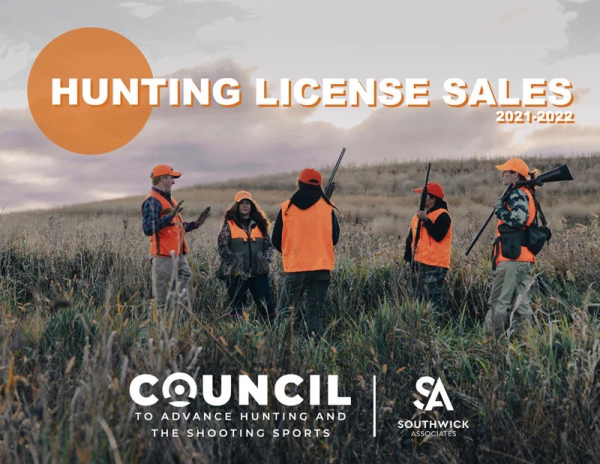Editor’s Note: Today’s feature was submitted by the Council to Advance Hunting and the Shooting Sports.

Washington, D.C. – Attendees of the 88th North American Wildlife and Natural Resources Conference, which wrapped up last week in St. Louis, got the first look at the results of the Hunting License Sales 2021 - 2022 report that documented a 3.1% decline in hunting license sales in 2022.
“We continued to track hunting license sales as one indicator of participation, and our results indicate that the impacts of COVID on getting people outdoors may be waning,” said the Council’s Director of Research and Partnerships, Swanny Evans, as he addressed the Hunting and Shooting Sports Committee in St. Louis. “Hunting license sales are settling back to pre-pandemic levels.”
The study was a follow-up to the past two years’ Council to Advance Hunting and the Shooting Sports studies that documented a 4.9% increase in hunting license sales from 2019 to 2020 (otherwise known as the COVID-Bump) and a 1.9% decrease the following year from 2020 to 2021.
To continue monitoring sales trends in the wake of the pandemic impact, the Council revisited this study in early 2023 to identify ongoing changes and emerging trends in hunters’ rates of license purchases.
Working with Southwick Associates, the Council collected monthly resident and nonresident hunting license sales data from 46 state wildlife agencies to quantify and compare 2022 to 2021 sales.
Among the 46 reporting states:
The Hunting License Sales 2021 - 2022 report, which provides the most representative data on the current state of hunting license sales nationally and regionally, can be accessed on the Council’s website, https://cahss.org/our-research/hunting-license-sales-2021-2022.
——-
Methods & Background
In January 2023, the Council asked all state fish and wildlife agency directors to submit monthly resident and nonresident hunting licensebsales for 2021 and 2022. The 46 responding states represent 91% of the U.S. Fish and Wildlife Service’s recorded certified license holders for calendar year 2020 (calculation year 2022). This response level was representative of the United States in general, so weighting and other potential data adjustments were not needed.
Only licenses that conveyed primary hunting privileges were collected. Secondary stamps, tags, and permits were excluded. Recognizing the results show trends in license sales, that not all hunters need a license, and that some hunters might buy more than one license annually, the results may not entirely reflect trends in the number of unique hunters, nor do they report any changes in the average days of activity per hunter. However, the results do provide insights in the changes in hunting license sales as the pandemic’s effects on recreational activities waned.
Results are provided geographically on a regional basis in the same groupings as the original 2021 study. Two states were newly reporting from 2022 and two others dropped out. The regional groupings for responding states are:
Northeast (13 states): Connecticut, Delaware, Maine, Maryland, Massachusetts, New Hampshire, New Jersey, New York, Pennsylvania, Rhode Island, Vermont, Virginia, West Virginia
Southeast (9 states): Alabama, Florida, Georgia, Kentucky, Louisiana, Mississippi, North Carolina, South Carolina, Tennessee
Midwest (11 states): Illinois, Indiana, Iowa, Kansas, Michigan, Missouri, Nebraska, North Dakota, Ohio, South Dakota, Wisconsin
West (13 states): Alaska, Arizona, California, Hawaii, Idaho, Nevada, New Mexico, Oklahoma, Oregon, Texas, Utah, Washington, Wyoming